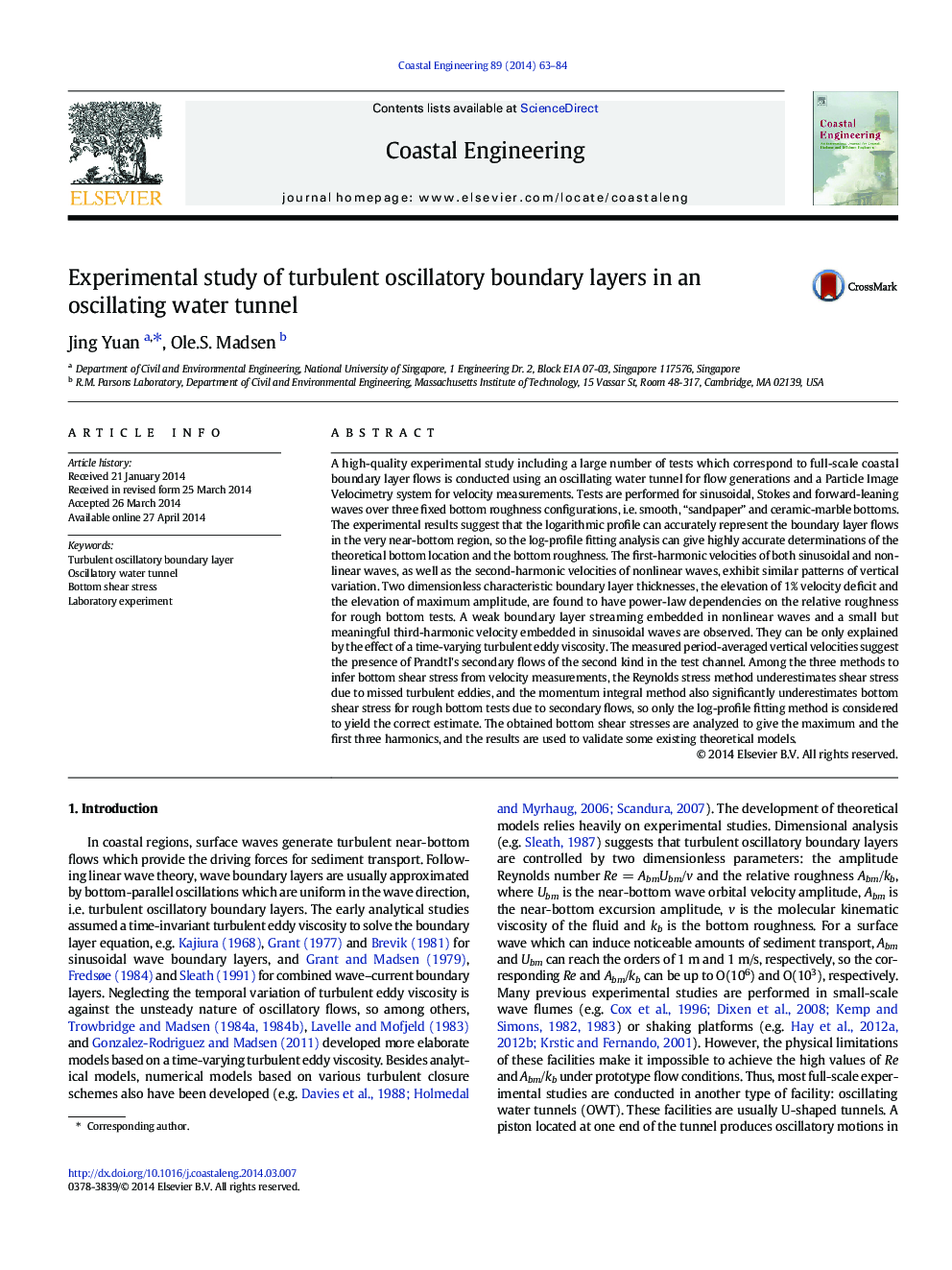| کد مقاله | کد نشریه | سال انتشار | مقاله انگلیسی | نسخه تمام متن |
|---|---|---|---|---|
| 1720789 | 1520365 | 2014 | 22 صفحه PDF | دانلود رایگان |
A high-quality experimental study including a large number of tests which correspond to full-scale coastal boundary layer flows is conducted using an oscillating water tunnel for flow generations and a Particle Image Velocimetry system for velocity measurements. Tests are performed for sinusoidal, Stokes and forward-leaning waves over three fixed bottom roughness configurations, i.e. smooth, “sandpaper” and ceramic-marble bottoms. The experimental results suggest that the logarithmic profile can accurately represent the boundary layer flows in the very near-bottom region, so the log-profile fitting analysis can give highly accurate determinations of the theoretical bottom location and the bottom roughness. The first-harmonic velocities of both sinusoidal and nonlinear waves, as well as the second-harmonic velocities of nonlinear waves, exhibit similar patterns of vertical variation. Two dimensionless characteristic boundary layer thicknesses, the elevation of 1% velocity deficit and the elevation of maximum amplitude, are found to have power-law dependencies on the relative roughness for rough bottom tests. A weak boundary layer streaming embedded in nonlinear waves and a small but meaningful third-harmonic velocity embedded in sinusoidal waves are observed. They can be only explained by the effect of a time-varying turbulent eddy viscosity. The measured period-averaged vertical velocities suggest the presence of Prandtl's secondary flows of the second kind in the test channel. Among the three methods to infer bottom shear stress from velocity measurements, the Reynolds stress method underestimates shear stress due to missed turbulent eddies, and the momentum integral method also significantly underestimates bottom shear stress for rough bottom tests due to secondary flows, so only the log-profile fitting method is considered to yield the correct estimate. The obtained bottom shear stresses are analyzed to give the maximum and the first three harmonics, and the results are used to validate some existing theoretical models.
Journal: Coastal Engineering - Volume 89, July 2014, Pages 63–84
